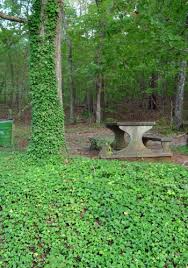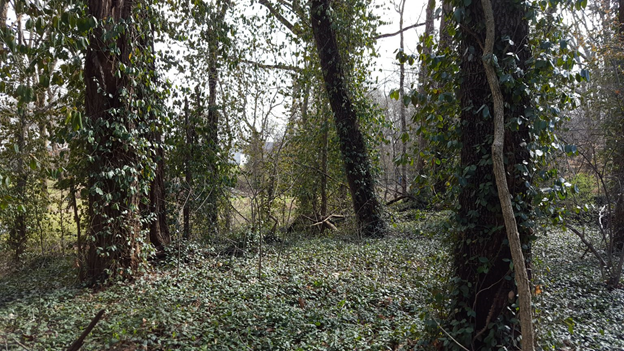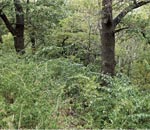
(BEDFORD) – Landowners who thought winter was a time to take a break from worrying about invasive plant management, might be interested to know that instead, winter is a time to be proactive.

Evie Phelps, President of Keep Invasives in Check (KIC), Lawrence County’s local grassroots effort to control invasive plants, suggests now is the best time to control certain types of invasives.

“With vines like honeysuckle, this time of year, the invasive honeysuckle is green and you can spray it on a warm sunny day and not kill the native vegetation underneath that the invasive vines are otherwise strangling,” notes Phelps.

She said many invasives stay green in winter while the natives go dormant. Many of the invasive vines like periwinkle, English ivy, and wintercreeper are most effectively treated in the winter months through March, but Phelps notes that treatment should only be done on days when the temperature is above 50 degrees Fahrenheit. Since these invasives have a waxy leaf surface it’s important to use a surfactant with the herbicide. Follow label directions for the use of herbicides.

Phelps added that cut stem treatment in the winter months of species such as bush honeysuckle, Japanese barberry, multiflora rose, privet, burning bush, and autumn olive is also effective. The stems need to be cut and the stumps treated with herbicide, again following label directions. Basal bark treatment is also doable but tricky with many of these species since they have multiple stems.

Working in winter, which is often a slower time for farmers and other landowners, gives managers a leg up on controlling these species. Garlic mustard, crown vetch, and dame’s rocket are plants that overwinter as green plants but also can be easily spotted by the seed heads they left behind so if not treated in winter you can identify areas to treat in spring. You can easily treat the green plants with a foliar spray, using surfactant, again when the temperatures are above 50 degrees.
Phelps said she and other KIC members know that taking care of our county’s native ecosystem takes year-round vigilance and a balance of treatment in the winter is a good way to stay on top of the issues and make the spring invasive control work easier. For more information, go to the KIC Facebook page to contact Phelps (lawrencecokic).
KIC works to promote awareness, identification, control, and prevention of invasive plants. As a bonus, the group has equipment available to loan out to those who want to control their invasives at the SWCD office in Bedford.
The equipment includes a backpack sprayer, sprayer for stump treatments, personal protective equipment, dye to track where you’ve sprayed, an invasive guide with information on what chemicals to use, and a safety checklist. The tool kit is provided by KIC through a grant from the Community Foundation to help with invasive treatment.
Contact the SWCD office at 812-279-8117, ext 3 to inquire about checking out the invasive tool kit.
New members are always welcome to the invasive group as well; contact the SWCD office for more information on how to join the group.



